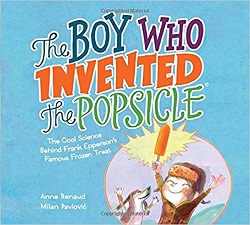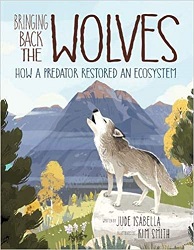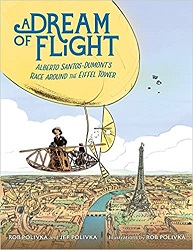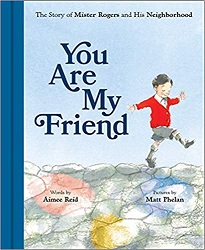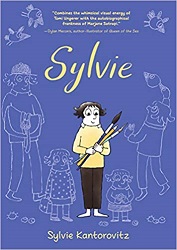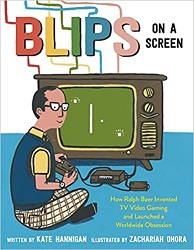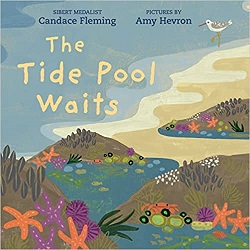Review of Marshmallow Clouds, by Ted Kooser and Connie Wanek, illustrated by Richard Jones
Two Poets at Play among Figures of Speech
by Ted Kooser and Connie Wanek
illustrated by Richard Jones
Candlewick Press, 2022. 72 pages.
Review written May 13, 2022, from a library book
Starred Review
I don’t usually get too excited about poetry collections, but this one had me smiling at new ways of looking at things I’d never thought of before. I started wanting to read bits aloud to a coworker. Though I’d also have to show them the beautiful images accompanying the poems.
The poets are indeed playing with ideas. First, we meet a winter tree that looks like it’s clowning around on the top of a hill, up on one leg and juggling a pie. Then there’s a meteor shower like scratches a black cat playing with an enormous ball that glitters, a fireplace like a playpen for the fire, a book as a sandwich of words and ideas, and a harp like a great golden moth as a harpist smooths the veins in its wings. Or let me type out the whole poem “Thunderstorm”:
This one’s gotten up in the night
and, not wanting to wake us,
stumbles around, bumping the walls
of the long empty hallway leading away,
now and then lighting a match
and then, just as quickly, blowing it out.
I love the images in these poems. They’re creative and so imaginative. Here’s the first stanza of a poem called “July”:
One summer day I was boiled and salted
like a peanut. I was the meat
in a heat sandwich, the dog in a hot.
I was the crimson crayon
melting in a sunny car,
the color of firecrackers and flags
and Mars, where once water
cooled the red stones.
Here’s the first stanza of a poem called “Secret”:
It’s safe to tell a secret to the stars,
aliens all. They haven’t
a word of English,
which means they are reliable
in their silence.
That poem has more about stars and secrets and fire burning up the secrets and how good it is to let them go.
And I need to stop giving examples, because there are far too many good ones. At the back, poet Ted Kooser tells what they are trying to do with this book:
Each of us is born with a gift of imagination and, as if it were a favorite cat or dog, playing with your imagination can keep it healthy and happy. The poems in this book are about fooling around, about letting one’s imagination run free with whatever it comes upon. Our idea is to encourage you to run with your own imagination, to enjoy what you come up with.
The poems in this book, combined with the simple and meditative images, filled me with delight. They’re divided into sections for Fire, Water, Air, and Earth.
A lovely collection of poems that might surprise you — as it did me.
Find this review on Sonderbooks at: www.sonderbooks.com/Childrens_Nonfiction/marshmallow_clouds.html
Disclosure: I am an Amazon Affiliate, and will earn a small percentage if you order a book on Amazon after clicking through from my site.
Disclaimer: I am a professional librarian, but the views expressed are solely my own, and in no way represent the official views of my employer or of any committee or group of which I am part.
What did you think of this book?

